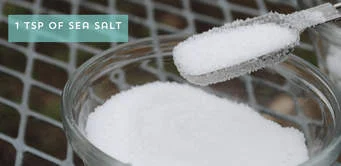Consumers have been cautioned to steer clear of skin- lightening creams over the danger they pose to the populace using them.
According to the Local Government Association in the United Kingdom (UK), which issued the warning, skin lightening creams should be “avoided at all costs,” based on their bleaching agent hydroquinone and their mercury contents, both of which endanger health.
Hydroquinone, described by the LGA as “the biological equivalent of paint stripper”, could remove the top layer of skin, increasing the risk of skin cancer, and causing fatal liver and kidney damage. Mercury could also cause similar life-threatening health problems, the bbc reported.
Unless they were issued on prescription by a doctor, creams containing hydroquinone, steroids or mercury are banned in the UK – because of their potentially serious side-effects.
However, the British Skin Foundation has advised people who have any concerns about their skin to speak to a doctor.
Chairman of the LGA’s Safer and Stronger Communities Board, Simon Blackburn said: “Skin creams containing banned ingredients are very dangerous and could seriously damage your health, scar you for life and even kill you, so they should be avoided at all costs.
“Consumers should always check the ingredients of their skin creams, be suspicious of very low prices, which are likely to indicate the lotion is fake and potentially harmful, and never use a product containing hydroquinone.”
According to the Local Government Association in the United Kingdom (UK), which issued the warning, skin lightening creams should be “avoided at all costs,” based on their bleaching agent hydroquinone and their mercury contents, both of which endanger health.
Hydroquinone, described by the LGA as “the biological equivalent of paint stripper”, could remove the top layer of skin, increasing the risk of skin cancer, and causing fatal liver and kidney damage. Mercury could also cause similar life-threatening health problems, the bbc reported.
Unless they were issued on prescription by a doctor, creams containing hydroquinone, steroids or mercury are banned in the UK – because of their potentially serious side-effects.
However, the British Skin Foundation has advised people who have any concerns about their skin to speak to a doctor.
Chairman of the LGA’s Safer and Stronger Communities Board, Simon Blackburn said: “Skin creams containing banned ingredients are very dangerous and could seriously damage your health, scar you for life and even kill you, so they should be avoided at all costs.
“Consumers should always check the ingredients of their skin creams, be suspicious of very low prices, which are likely to indicate the lotion is fake and potentially harmful, and never use a product containing hydroquinone.”










































